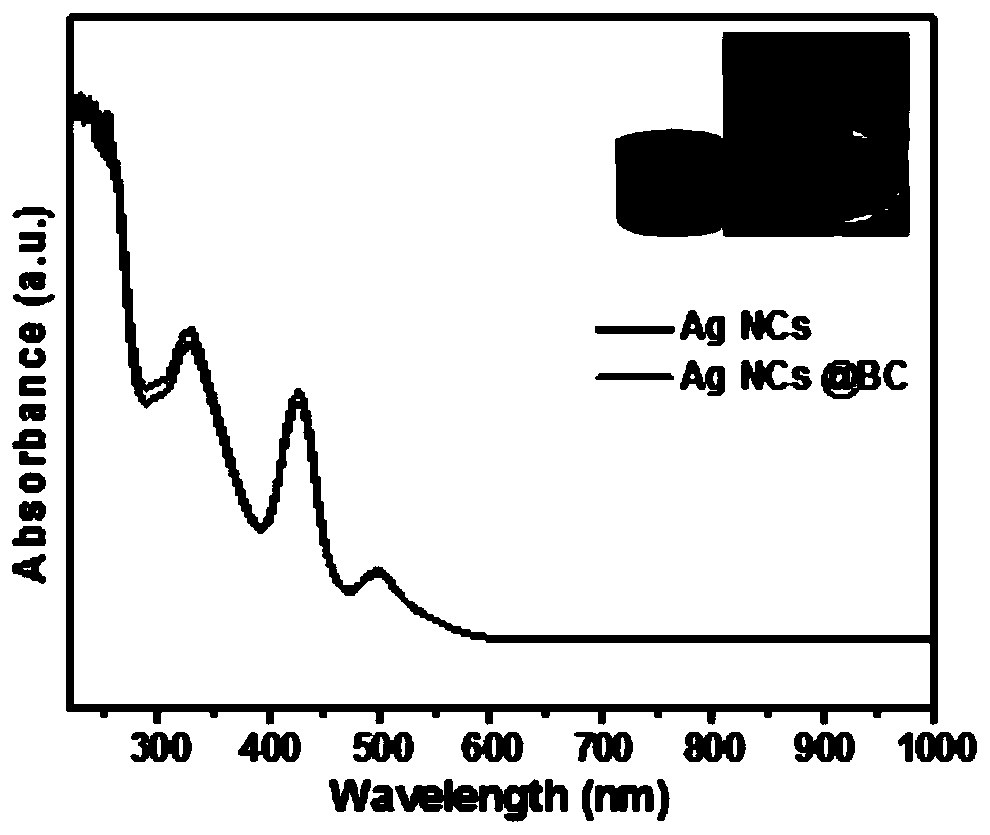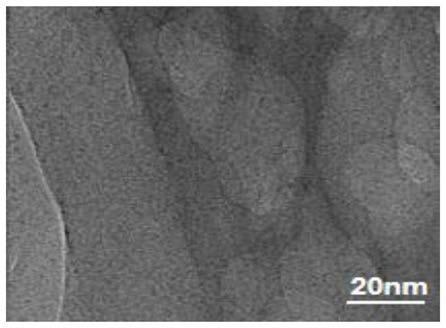Antibacterial hydrogel, and preparation method and application thereof
A technology of hydrogel and bacterial cellulose, which is applied in the directions of antibacterial drugs, pharmaceutical formulations, and medical preparations with inactive ingredients, etc. Best sustained antibacterial effect, biotoxicity reduction, biotoxicity reduction effect
- Summary
- Abstract
- Description
- Claims
- Application Information
AI Technical Summary
Problems solved by technology
Method used
Image
Examples
Embodiment 1
[0029] Soak the bacterial cellulose in silver nitrate solution for 20 hours, add the corresponding ligand lipoic acid, stir at room temperature for 15 minutes, then add the corresponding reducing agent sodium borocyanide for reduction, stir at room temperature for 24 hours, the concentration of the silver nitrate solution It is 4mmol / L, and the concentration of described lipoic acid is 20mmol / L, and the concentration range of described sodium borocyanide is 8mmol / L, AgNO (silver nitrate): DHLA (lipoic acid): NaBH The mole of (sodium borohydride) The concentration ratio is 1:5:2, and the final synthesis product is a silver nanocluster-based hydrogel composite AgNCs@BC. The above synthesis schematic diagram is shown in figure 1 shown.
[0030] The Ag NCs and the AgNCs@BC prepared in Example 1 were detected by ultraviolet-visible light absorption spectrum, and the spectrogram is shown in figure 2 ,like figure 2 As shown, the absorption spectrum of AgNCs@BC synthesized in situ...
Embodiment 2
[0037] Soak bacterial cellulose in silver nitrate solution for 20 hours, add corresponding ligand lipoic acid, stir at room temperature for 15 minutes, then add corresponding reducing agent sodium borocyanide for reduction, stir at room temperature for 24 hours, the silver nitrate solution Concentration is 8mmol / L, and the concentration of described lipoic acid is 40mmol / L, and the concentration scope of described sodium borocyanide is 16mmol / L, AgNO3 (silver nitrate): DHLA (lipoic acid): NaBH4 (sodium borohydride) The molar concentration ratio is 1:5:2, and the final synthesis product is a silver nanocluster-based hydrogel composite AgNCs@BC. The above synthesis schematic diagram is shown in figure 1 shown.
[0038] 2.1 The AgNCs@BC obtained in Example 2 was tested for antibacterial activity, and the specific tests were as follows:
[0039] Antibacterial experiment of AgNCs@BC against Staphylococcus aureus:
[0040] Cultivate Staphylococcus aureus in fresh bacterial culture...
Embodiment 3
[0053] Soak bacterial cellulose in silver nitrate solution for 20 hours, add corresponding ligand lipoic acid, stir at room temperature for 15 minutes, then add corresponding reducing agent sodium borocyanide for reduction, stir at room temperature for 24 hours, the silver nitrate solution Concentration is 12mmol / L, and the concentration of described lipoic acid is 60mmol / L, and the concentration range of described sodium borocyanide is 24mmol / L, AgNO3 (silver nitrate): DHLA (lipoic acid): NaBH4 (sodium borohydride) The molar concentration ratio is 1:5:2, and the final synthesis product is AgNCs@BC, a silver nanocluster-based hydrogel composite.
PUM
| Property | Measurement | Unit |
|---|---|---|
| size | aaaaa | aaaaa |
Abstract
Description
Claims
Application Information
 Login to View More
Login to View More - R&D Engineer
- R&D Manager
- IP Professional
- Industry Leading Data Capabilities
- Powerful AI technology
- Patent DNA Extraction
Browse by: Latest US Patents, China's latest patents, Technical Efficacy Thesaurus, Application Domain, Technology Topic, Popular Technical Reports.
© 2024 PatSnap. All rights reserved.Legal|Privacy policy|Modern Slavery Act Transparency Statement|Sitemap|About US| Contact US: help@patsnap.com










